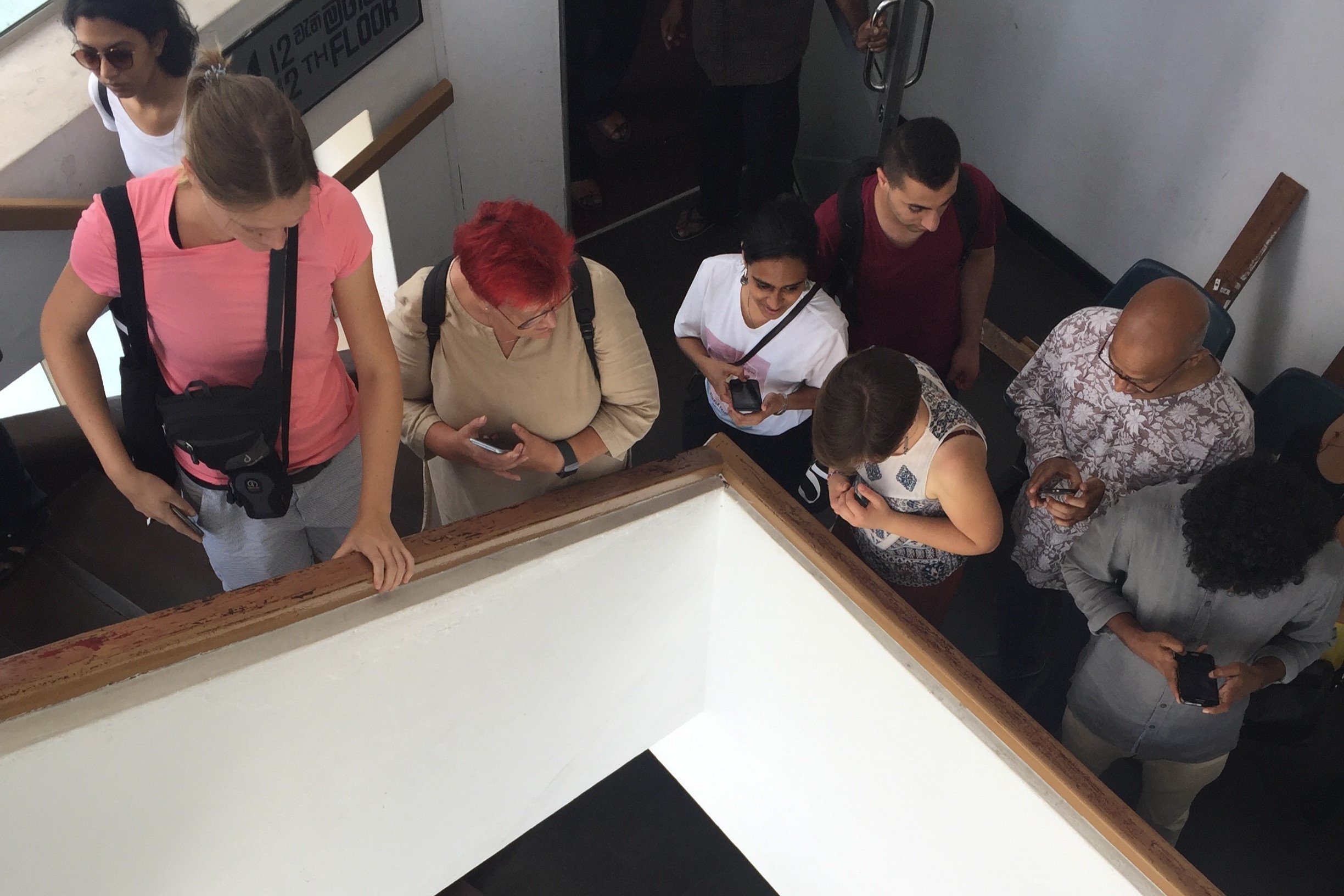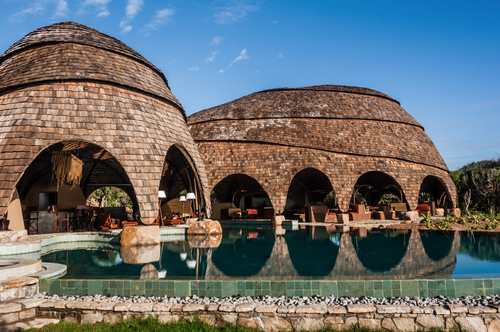
The year 2019 will mark the centenary of Geoffrey Bawa’s birth and the Lunuganga Trust celebrates this eminent architect’s legacy through a program of events scheduled from July 2019 to July 2020. The program will include exciting projects by Chandragupta Thenuwara, Dayanita Singh, Dominic Sansoni, Lee Mingwei, Kengo Kuma, Sebastian Posingis and many others.
The Centennial is an important marker for the Geoffrey Bawa and Lununganga Trusts, to reflect upon its significant achievements over the last 25 years and an occasion to promote the two Trusts’ mission. The centenary programme is designed around both broadening and deepening the Trust’s engagement with Geoffrey Bawa’s legacy.
The programme will inspire and initiate work that spans geographic, generational and medium-specific divides, using the ideal contextual background of Geoffrey Bawa’s life and work.
Decorative Arts in the Geoffrey Bawa Collection
14 – 21 July 2019
Time: 10 a.m. – 4 p.m.
Venue: Lunuganga
Gallery talk on Burgomeister Chairs:
14 July at 3 p.m.
Curator led-tours:
Will take place on the 14th, 16th, 20th and 21st,
led by Lunuganga Trust curator Shayari de Silva.
The first in a series of exhibitions and publications to introduce some of the extraordinary holdings in the Geoffrey Bawa Collection, this installation of decorative objects, will be on view in situ at Lunuganga. These fascinating objects provide a first glimpse of both the social and private uses of these beautiful things collected over a lifetime by an aesthete with unfettered eclectic tastes, thus building another cipher through which to view the legacy of Bawa.
In conjunction with this event, Ayesha Rahman of Lanka Decorative Arts will deliver a gallery talk on the Burgomeister Chair. Many fine examples of this chair lie within the Bawa Collection and attendees will closely observe these examples while exploring their history
16th Annual Geoffrey Bawa Memorial Lecture
23 July 2019
Time: 5.30 p.m.
Venue: Sri Lanka Foundation Institute
This year's memorial lecture, falling on the 100th birth anniversary of the late Geoffrey Bawa, will be delivered by renowned Japanese Architect, Kengo Kuma.
Kengo Kuma was born in 1954. Before establishing Kengo Kuma & Associates in 1990, he received his Master’s Degree in Architecture from the University of Tokyo, where he is currently a Professor of Architecture. Having been inspired by Kenzo Tange’s Yoyogi National Gymnasium, built for the 1964 Tokyo Olympics, Kengo Kuma decided to pursue architecture at a young age, and later entered the Architecture program at the University of Tokyo, where he studied under Hiroshi Hara and Yoshichika Uchida. During his Graduate studies, he made a research trip across the Sahara, exploring various villages and settlements, observing a unique power and beauty. After his time as a Visiting Scholar at Columbia University in New York, he established his office in Tokyo. Since then, Kengo Kuma & Associates has designed architectural works in over twenty countries and received prestigious awards, including the Architectural Institute of Japan Award, the Spirit of Nature Wood Architecture Award (Finland), and the International Stone Architecture Award (Italy), among others. Kengo Kuma & Associates aims to design architecture which naturally merges with its cultural and environmental surroundings, proposing gentle, human scaled buildings. The office is constantly in search of new materials to replace concrete and steel, and seeks a new approach for architecture in a post-industrial society.
Unseen Bawa Exhibition by Sebastian Posingis
UNSEEN BAWA: Virtual Exhibition
Photographs by Sebastian Posingis
16–28 June 2020
24–31 July 2019
Time: 10 a.m. – 7 p.m
Venue: Paradise Road, The Gallery Café
This exhibition of photography by Sebastian Posingis will present a selection of the lesser known works by Geoffrey Bawa.
Posingis is the author of perhaps the most extensive collection of photographs recording Bawa’s work. These photographs, taken over a course of 5 years reveal Posingis’ extraordinary sensitivity to the poetry in Bawa’s buildings. Installed at the Paradise Road Gallery Café, formerly Geoffrey Bawa’s office, the work resonates with the rhythms, patinas and proportions that characterize much of Bawa’s architecture, and which are exemplified in the Gallery.
The Gift
Artist-panel Discussion
24–31 July 2019
Time: 10 a.m. – 7 p.m
Venue: Paradise Road, The Gallery Café
Kithul-Ami
Kengo Kuma
Symbiotic Organisms
Dominic Sansoni
The first launch of The Gift installation Series
5 January 2020
Venue: Lunuganga
Panel Discussion featuring the participating Artists Dominic Sansoni, Lee Mingwei, Chandragupta Thenuwara and Dayanita Singh.
Moderated by:
Suhanya Raffel, Executive Director of M+, Hong Kong, and Trustee, Geoffrey Bawa & Lunuganga Trusts
Sean Anderson, Associate Curator of Architecture & Design, MoMA, New York
Shayari de Silva, Curator, Lunuganga Trust
Kengo Kuma’s practice has been characterized by a commitment to using traditional materials and crafts in innovative forms and techniques. Pavilions have also played an essential role in processes of experimentation and development of ideas, in Kuma’s architecture practice as within the discipline. For this work at Lunuganga, Kuma drew inspiration from the outdoor furniture Bawa designed for Kandalama, a few of which are scattered across the garden, and the local kithul craft, where strands from the kithul flower are dried and woven into household objects. Working with a team shepherded by Disna Shiromali, a weaver based in Galle, and Indika Kumarasingha, a metalsmith based in Bentota, the pavilion was designed to offer a brief moment of repose and reflection through the framing of views. The pavilion can also be used for tea ceremonies and similar gatherings.
Zephyrus’ Breath
Lee Mingwei
Lee Mingwei creates participatory works which explore issues of trust and intimacy often through the lens of time and chance. Mingwei’s installation at Lunuganga draws from a tripartite work titled Trilogy of Sounds done in 2010 for Mount Stuart in the Isle of Bute, Scotland. In bringing the bells to Sri Lanka, several subtle adjustments were made by the artist to adapt to the local context. Here, they are made of three dimensions of locally available pre-cast brass tubes, suggesting a timbre akin to the temple bells of the island. Bawa himself used fourteen different bells throughout Lunuganga — each bell having a distinct register which helped identify his location in the garden. This work, titled Zephyrus’ Breath, reveals the sensitivity to place and encounter which characterizes much of Mingwei’s work, offering an experience that is unique to each visitor.
Dominic Sansoni has been photographing Lunuganga since 1977. Perhaps the most well known images are those which he took along with Christoph Bon, in black and white, for Bawa’s own publication Lunuganga in 1989. For his work in The Gift, Dominic took a very close look at the garden, showing the garden at a scale that is rarely observed. This “garden within a larger garden” which Dominic has photographed reflects many of the themes that have characterized his practice over the years; an interest in chroma, or the qualities of colour, landscapes and things observed as they are naturally found to be. Viewed together, the photographs in this installation show Dominic’s acute observations of the changing and unchanging elements in the garden, and the relationships that he has documented over the years.
Public opening of Chandragupta Thenuwara & Dayanita Singh
6 September 2020
Venue: Lunuganga
Lunuganga Chairs
Dayanita Singh
Dayanita Singh uses photography to reflect on spaces and experiences; often capturing the ephemeral, transcendent qualities inherent in architecture. Her images are intended to be encountered through fluid sequences and are housed in architecture designed by the artist to encourage the viewer to engage keenly; subtle changes over time may be observed by the astute viewer. Her work for The Gift follows an extensive body of work on Bawa. With this installation, the artist states, “Somehow — alongside my interest in architectural structures, came the clarity about the limitations of the photographic print. Box 507 emerged precisely because the photographs revealed too much and not enough at the same time. As though a photograph could not get to the essence of what I experienced in the sublime Kandalama. Similarly, when I printed the Lunuganga Chairs — they seemed almost vulgar in how much detail they revealed. There was too much information — and then, by chance, the painting started. I no longer wanted the dark blacks or the highlights — just if I stayed in the mid tones, maybe something more would reveal itself. Perhaps closer to my experience of the place.”
Beautification II
Chandragupta Thenuwara
Chandragupta Thenuwara’s practice as an artist is deeply intertwined with the politics of Sri Lanka. Formally trained in painting, Thenuwara works in a range of media and uses intricate details tinged with dry humour to critique the ever-unfolding political landscape of the island. Thenuwara’s work at Lunuganga once more picks up the theme of Beautification, the subject of his solo exhibition in Colombo in 2013, which addressed the then-government’s urban gentrification programme through the guise of ‘Beautification.’ In this new work, Thenuwara engages with the garden through the existing natural and man-made elements and Bawa’s own practice of using systems of grids and axes to ground his work, which then negotiates the extant natural landscape. Beautification, too?
Box 507; book objects by Dayanita Singh
25 – 27 July 2019
Venue: Barefoot Gallery (To be followed at the Frith Street Gallery, London & Callicoon Fine Arts Gallery, New York)
The Greedy Forest
21 – 29 September 2019
Time: 10 a.m. – 4 p.m
Venue: No. 5 at Lunuganga (Ena de Silva house)
This exhibition is about the inimitable landscaped environments of Laki Senanayake, tantalizingly gestated years earlier in his drawings and sculptures. Through extensive research carried out by curator Max Moya, the exhibition presents an incisive and profound understanding of Laki’s work.
Mining drawings, sketches, publications and ephemera from a range of archives, including Laki’s own and the Geoffrey Bawa Collection, this exhibition looks at Laki’s oeuvre of landscapes as they are situated within his artistic practice. Positing that there is an ideal forest in Laki Senanayake’s mind that is the subject of most of his work, the exhibition tries to understand this fantasy space.
It seems only natural that there should be an exhibition, finally, dedicated to Laki’s landscapes. Not only has he created so many that deserve to be shown as the art form that they are, but also by interrogating his relationship with the natural world, we just may come to understand this singular man’s talents.
21 September, Saturday
11 am | Curatorial tour with Max Moya
Peruvian Architect Max Moya first met Laki through a Home Away exchange in 2018. The two became firm friends, and Max took on the task of researching Laki's landscape work, which has been a part of Laki's practice for over 30 years. Living at Diyabubula for over three months, and spending extensive time speaking with Laki, studying the drawings and visiting the projects, Max carried out the research that would ultimately take the form of the exhibition The Greedy Forest.
2 pm | Tour of Number 05 with Amila de Mel
Architect Amila de Mel worked with Geoffrey Bawa's architectural practice from 1991 - 1995. Amila will give a tour of the Ena de Silva house. In 1962 Ena de Silva and her husband Osmund commissioned Geoffrey Bawa to design their home in a modest plot in the heart of Colombo. Bawa's design negotiated the increasing urbanity of the site with an introspective design which was both radically modern and yet drew inspiration from traditional architectural tropes in Sri Lanka, like the central courtyard. The success of the design makes the house a pivotal project in Bawa's career. It was also the beginning of a deep friendship between Ena and her architect. In 2009 when Ena wished to sell the land the house was built on, Amila shepherded the Lunuganga Trust's project to work with a team of architects, archaeologists and engineers carefully disassembling the house and rebuilding it stone by stone at Lunuganga, where it stands today.
3 pm | Conversation with Ruk Rakaganno
An informal discussion around trees and the possibilities of green coffins and green funerals with members of Ruk Rakaganno including Irangani Serasinghe. Ruk Rakaganno - The Tree Society of Sri Lanka - is a national NGO that was founded in 1975.
28 September, Sunday
11 am | Children’s Art Class with Shayari de Silva
Join Lunuganga Trust curator Shayari de Silva for a tour of the Greedy Forest exhibition and the Ena de Silva house aimed specially for younger visitors, to be followed by an art workshop reflecting on the exhibition and the Ena de Silva house. All materials will be provided.
29 September, Sunday
10 am - 12 pm | Ikebana - A Timeless Japanese Art with Jennifer Moragoda
“Ikebana expresses the rich, natural beauty which accompanies seasonal change...It is about the love and need to create beautiful forms.”
—Teshigahara Sofu
Ikebana is a form of meditation that brings about self-discovery, opens your eyes to the cycles of nature and tunes you in to the universe at large.
Sogetsu Ikebana practitioner Jennifer Moragoda will lead a small group in an hands-on introduction to the sublime Japanese art of flower arranging in the natural setting of Lunuganga. Founder of the Sogetsu School of Ikebana, Teshigahara Sofu, famously said “Anyone, anywhere, anytime with any kind of material,” in describing his approach to this distinctly Japanese tradition. The workshop will include a focus on materials found in the gardens of Lunuganga, a deeply contemplative space where order and chaos exist in perfect harmony. Part of the Geoffrey Bawa Trust's programme for The Greedy Forest, an exhibition on Laki Senanayake's landscape work, the workshop will introduce a unique approach for appreciating and engaging with nature, much like Laki's own drawings of natural settings.
12 pm & 2 pm | Tour of Number 05 with Amila de Mel
22 September, Sunday
11 am and 2 pm | Curatorial tour with Max Moya
Open Buildings Day
12 October 2019
Venue: Colombo; Stanley de Saram house, Number 11, Ladies College, Mahaweli Authority (formerly State Mortgage Bank), 61/6 Ward Place, Hector Kobbekaduwa Agrarian Research and Training Institute, Paradise Road The Gallery Cafe.
Tour of Geoffrey Bawa-designed buildings in Colombo by Channa Daswatte, principal architect, MICD Associates, and Trustee, Lunuganga Trust and Geoffrey Bawa Trust
Bentota Beach Hotel Open Day
5 January 2020
Venue: Cinnamon Bentota Beach, Bentota
The renovated Bentota Beach Hotel opened its doors to guests. The hotel was designed in 1967 by Geoffrey Bawa and was one of the first resorts in the region; its influence remains strong even today. The renovation was carried out by Channa Daswatte and his practice MICD Associates. The original artworks in the building were restored and replaced, preserving Bawa’s conception of the Hotel.
17th Annual Geoffrey Bawa Memorial Lecture
25 July 2020
Venue: TV1 and Geoffrey Bawa Trust YouTube channel
Marina Tabassum graduated from Bangladesh University of Engineering and Technology (BUET). She is the Academic Director of Bengal Institute for Architecture, Landscapes and Settlements.
She has taught Architectural Design in BRAC University as a visiting Faculty Member since 2005. She taught Advanced Design Studio as Visiting Professor at UTA, Texas in Fall 2015. Currently she is teaching Architectural Design at Harvard University Graduate School of Design. Marina Tabassum received the Aga Khan Award for Architecture in 2016 for her project Bait ur Rouf mosque in Dhaka, Bangladesh. She also designed the Independence Monument of Bangladesh and the Museum of Independence during her partnership with Kashef Chowdhury in urbana. Tabassum is the principal of Bangladesh-based architecture practice MTA established in 2005. MTA began its journey in the quest of establishing a language of architecture that is contemporary to the world yet rooted to the place. MTA stands against the global pressure of industrial materials – easy and quick–and works with a material palette which is carefully selected to work in the climate, the location, the culture of the people and history of the land for each project. The practice is consciously retained at an optimum size and projects undertaken are carefully chosen and are limited by number per year.
Oral Histories Project
May 2020
Listen on:
Geoffrey Bawa Trust Website
SoundCloud
Apple Podcasts
Spotify
The Geoffrey Bawa Oral History Programme, initiated in 2018 as part of the Centenary Programme, is part of the Trust’s efforts to expand the repository of primary source material available on Geoffrey Bawa and his practice.
Through a series of informal conversations with Bawa’s former friends, colleagues and collaborators, recorded in audio and video formats, the programme seeks to reflect on the nature of Bawa’s architectural practice, his methods, his personality and the many important collaborators who enabled and enriched the work, thus enabling deeper study of Bawa’s work. Extracts of the conversation will be made available on the Trust’s website in January 2020. Our oral historians will include Amila de Mel, Anura Ratnavibushana, Channa Daswatte, David Robson, Deepal Wickremasinghe, Dilshan Ferdinando, Ismeth Raheem, Laki Senanayake, Michael Snelling, Philip Fowler, Pierre Pringiers, Saskia Pintelon, Suhanya Raffel and Sunethra Bandaranaike.
The Oral Histories programme is an ongoing endeavour that will continue after the centenary year, and the Trust encourages submissions of potential historians and anecdotes to archives@gbtrust.net.
Whether you are on your desktop, laptop, or mobile, there are a number of options to listen to the episodes of Oral Histories.
5th Triennial Geoffrey Bawa awards for Excellence in Architecture 2019/2020
July 2021
Awards page
The Awards were conceptualised in 2007 to recognise and reward outstanding examples of contemporary Sri Lankan architecture. The Geoffrey Bawa Awards scheme is modelled on the awards scheme of the prestigious Aga Khan Trust for Culture in Geneva, widely acknowledged as having had a significant impact on the architecture of developing countries. Deshamanya Bawa received the Aga Khan’s Special Award for a Lifetime’s Achievement in Architecture in 2001. More info
The winner of the fifth cycle will be announced at a gala ceremony that celebrates the winners and their work, to coincide with Geoffrey Bawa’s 101st birth anniversary. The winner will be awarded a sum of one million rupees, as in previous years.
Shortlisted Projects
We are delighted to announce the shortlisted projects for the Fifth Cycle of the Triennial Geoffrey Bawa Awards for Excellence in Architecture. The Awards Ceremony, scheduled initially for July 23, 2020 has been postponed to July 2021 due to Covid-19. This year's jury comprises Barry Bergdoll, Veranjan Kurukulasuriya, Swarna Mallawarachchi and Nadija Tambiah.
No. 12 Flower Road
Suresh Mudannayake
Proposed Office Building for Colombo Municipal Council
Pulasthi Wijekoon Guruge & Ruwani Thusara Waidyasekara
Lanka Learning Centre
Feat.collective
Studio Apartment for Lavan
MMGS Architects
Cafe UFO
RAPA Chartered Architects
Frame Holiday Structure at Imaduwa
Palinda Kannangara Architects
Santhi Children Home
Associate Professorship of Architectural Design and Timber Construction
Wild Coast Tented Lodge
Nomadic Resort
















































































